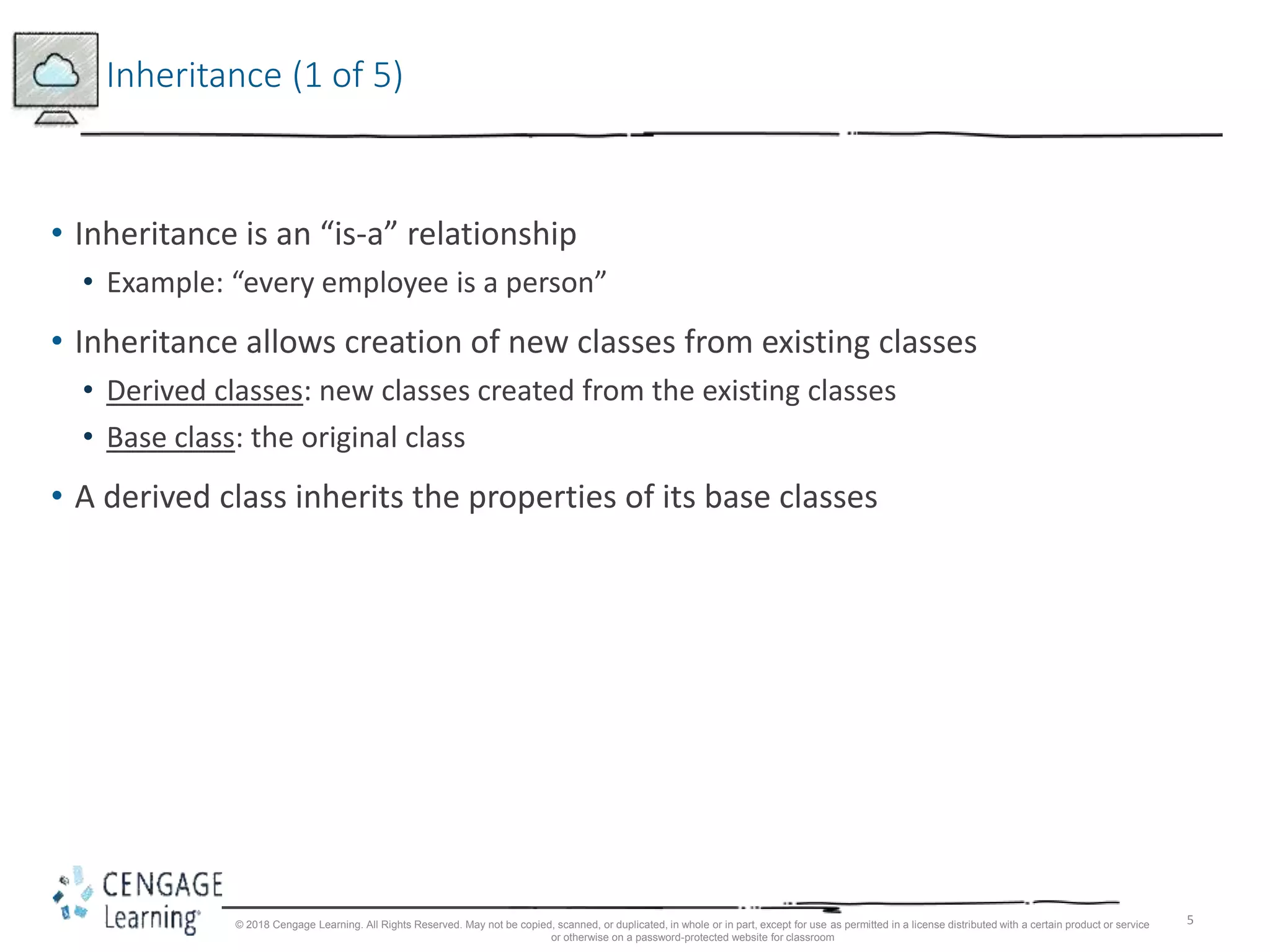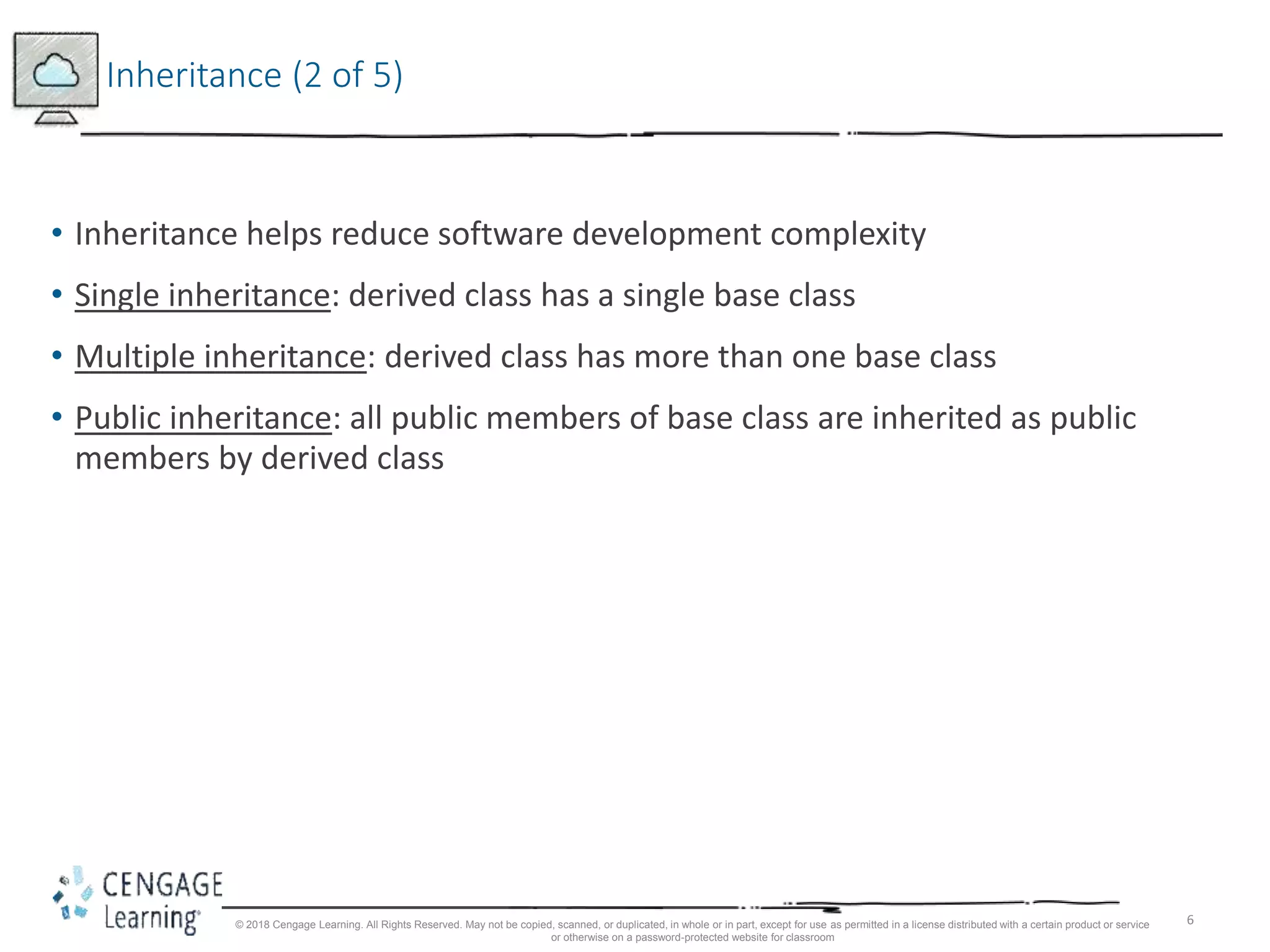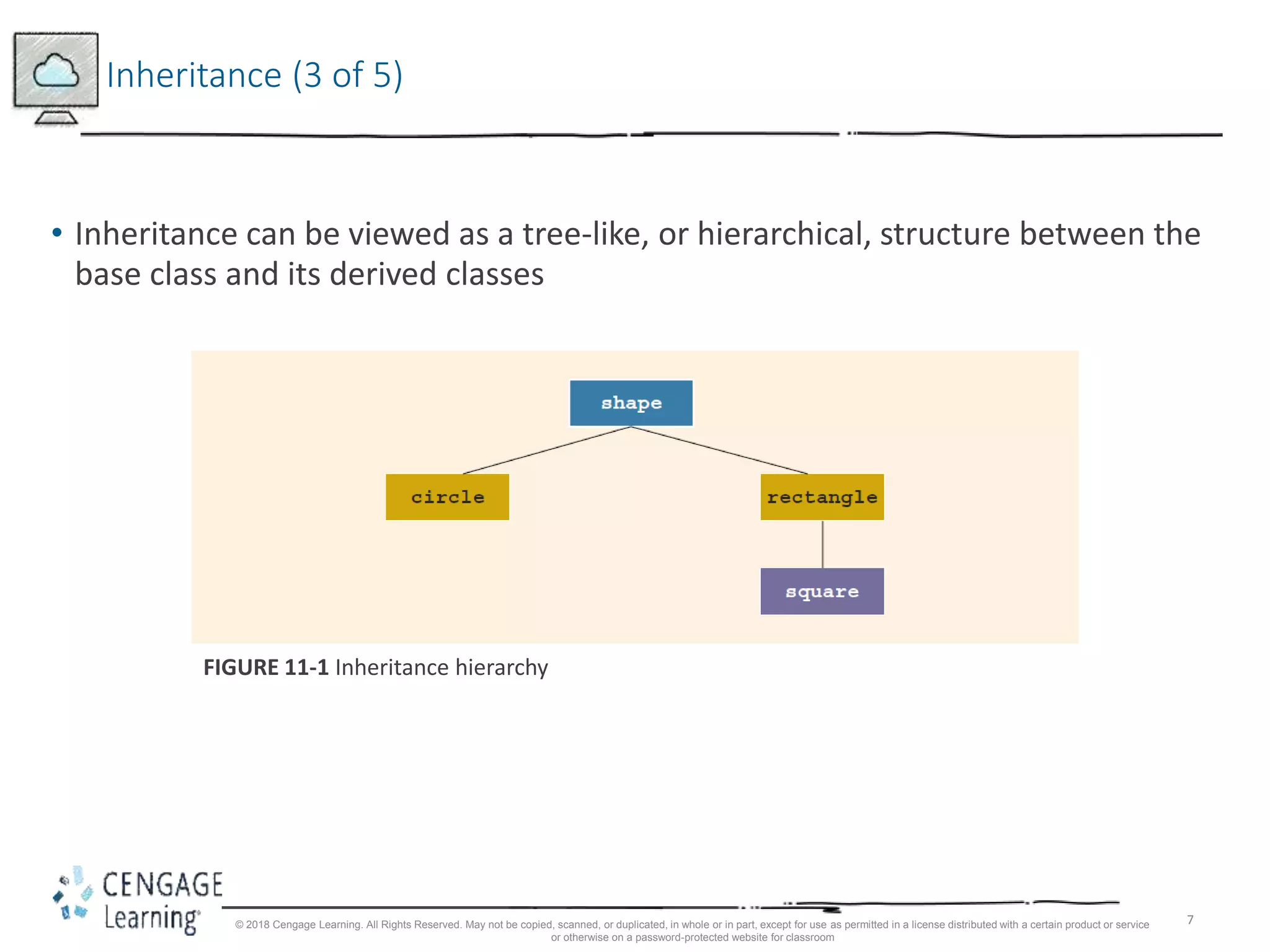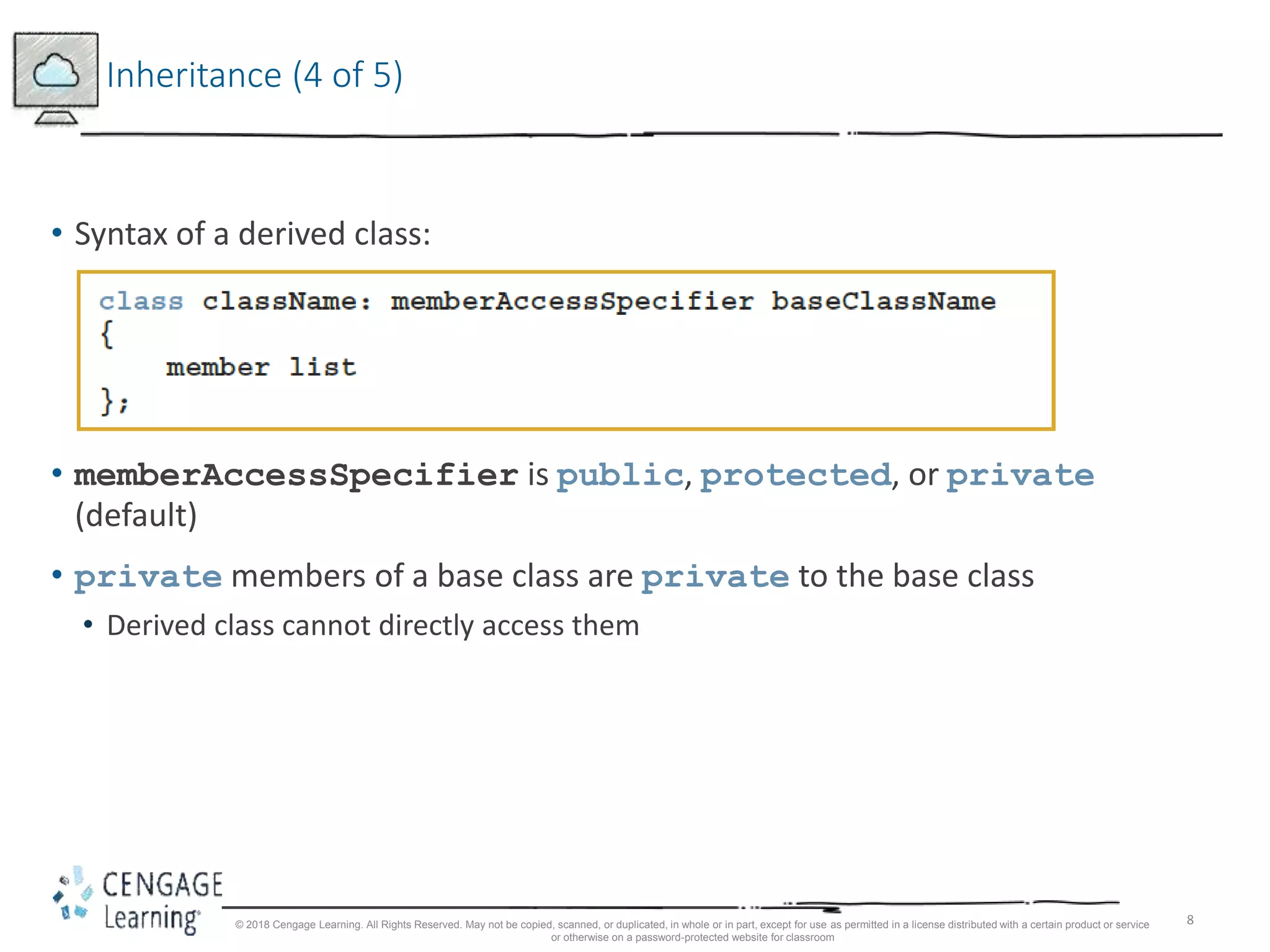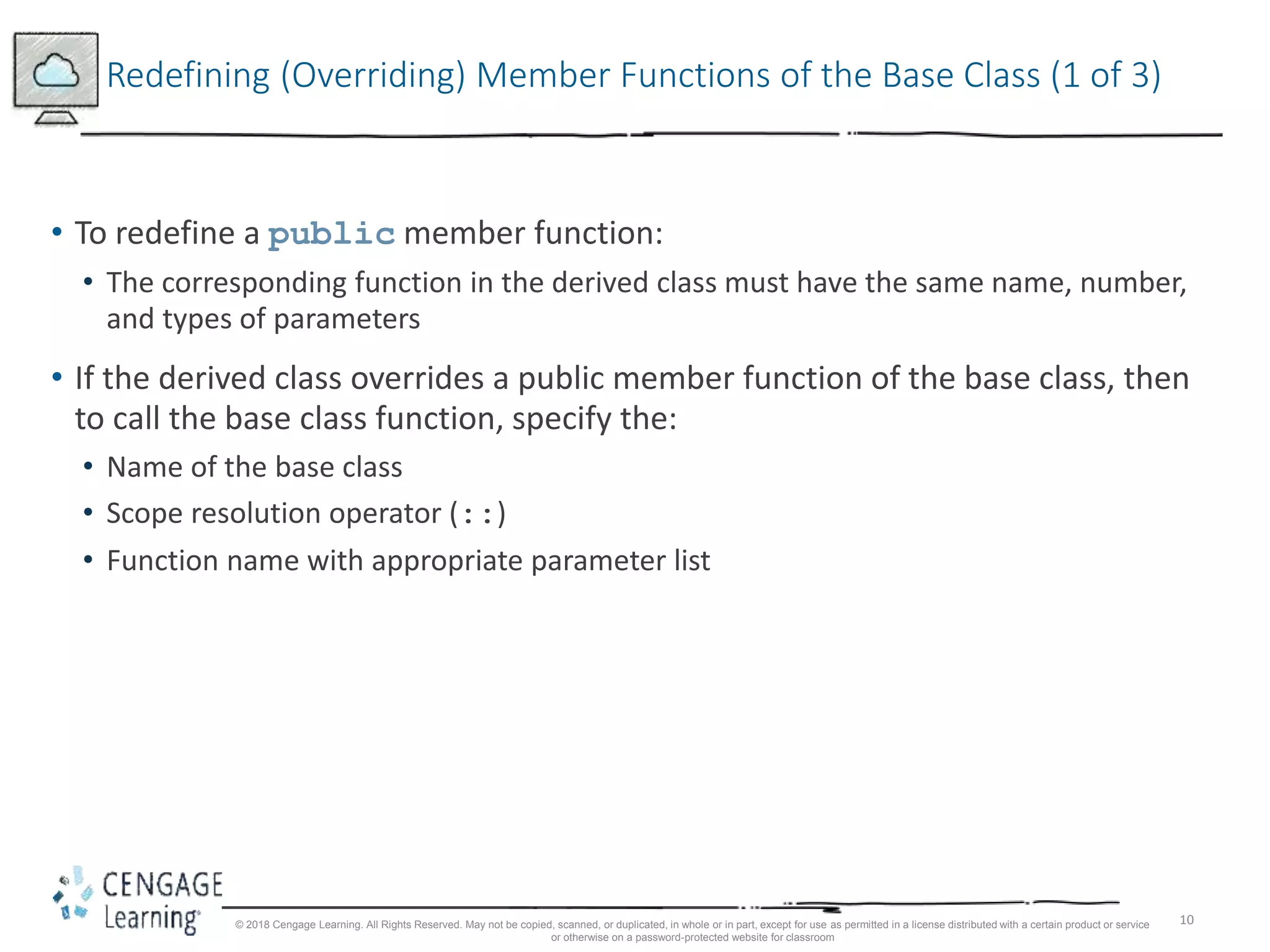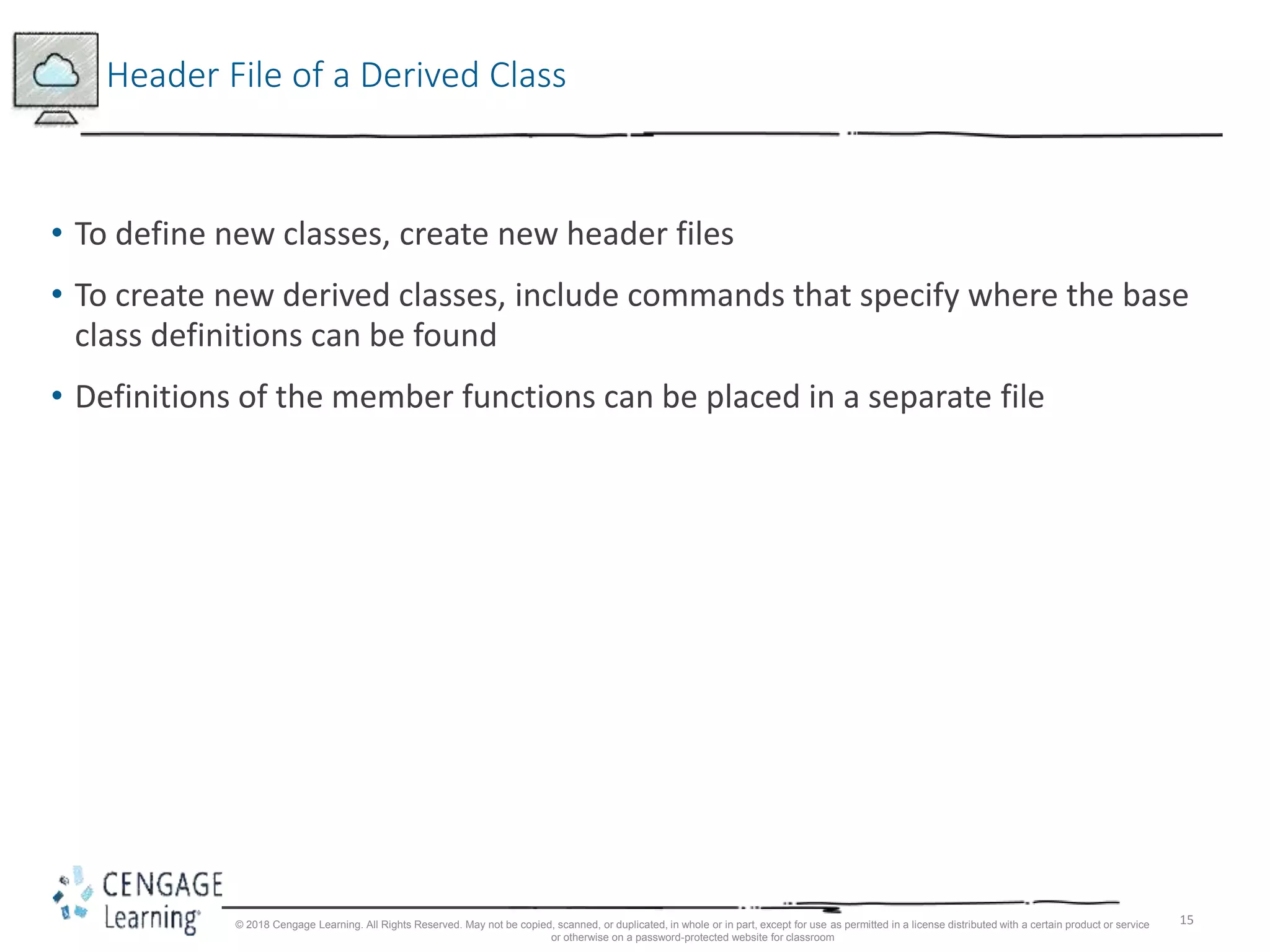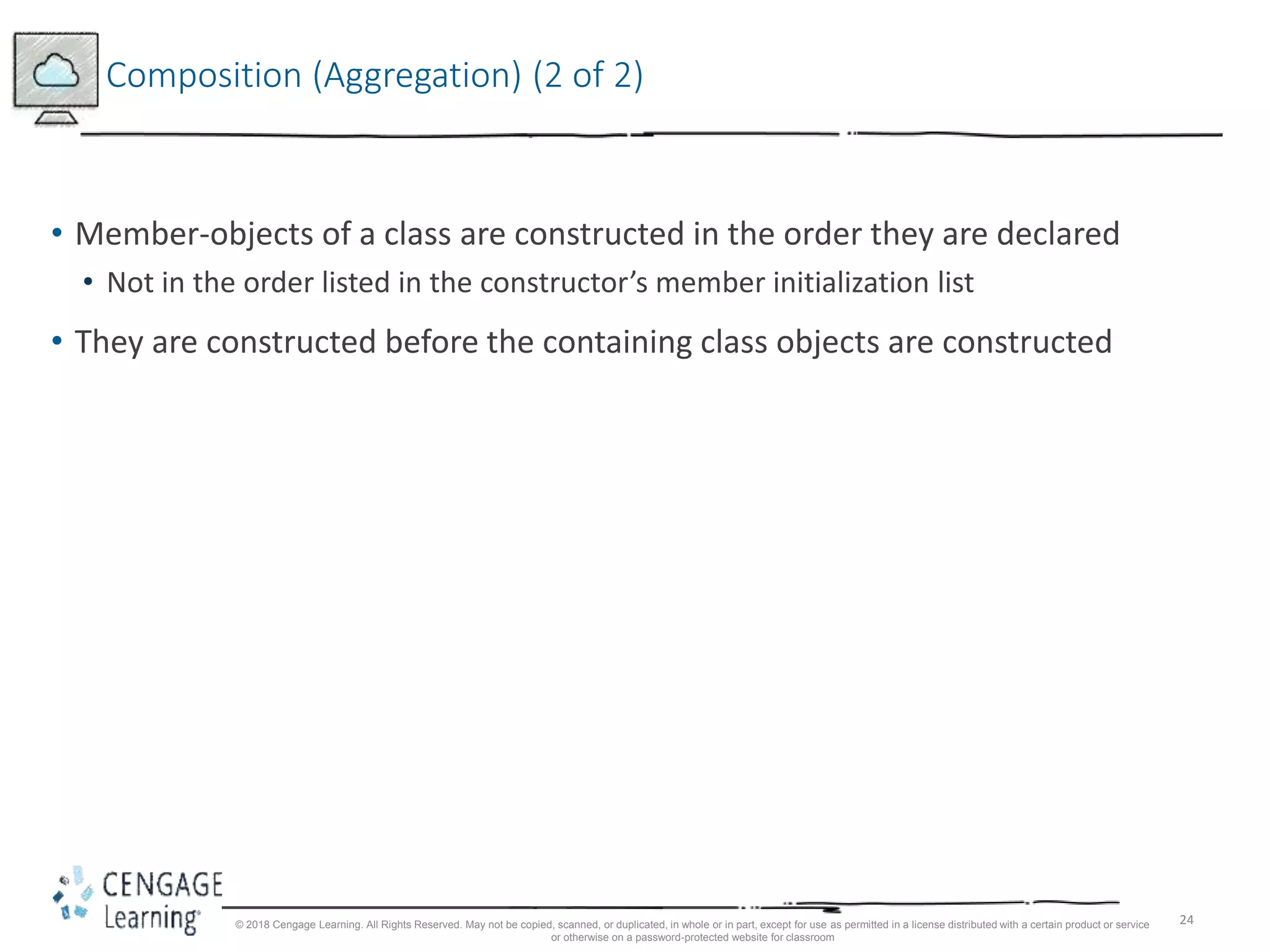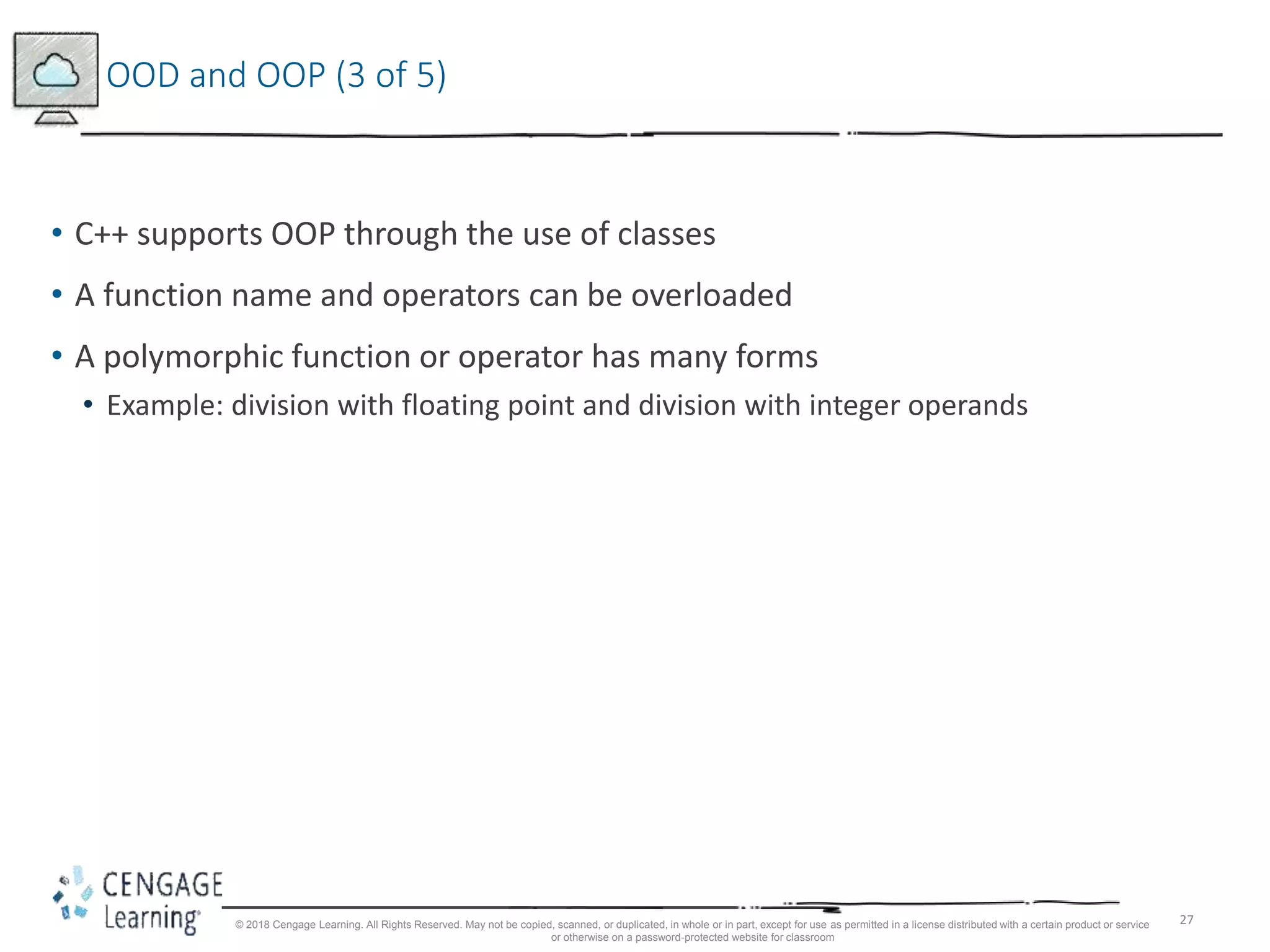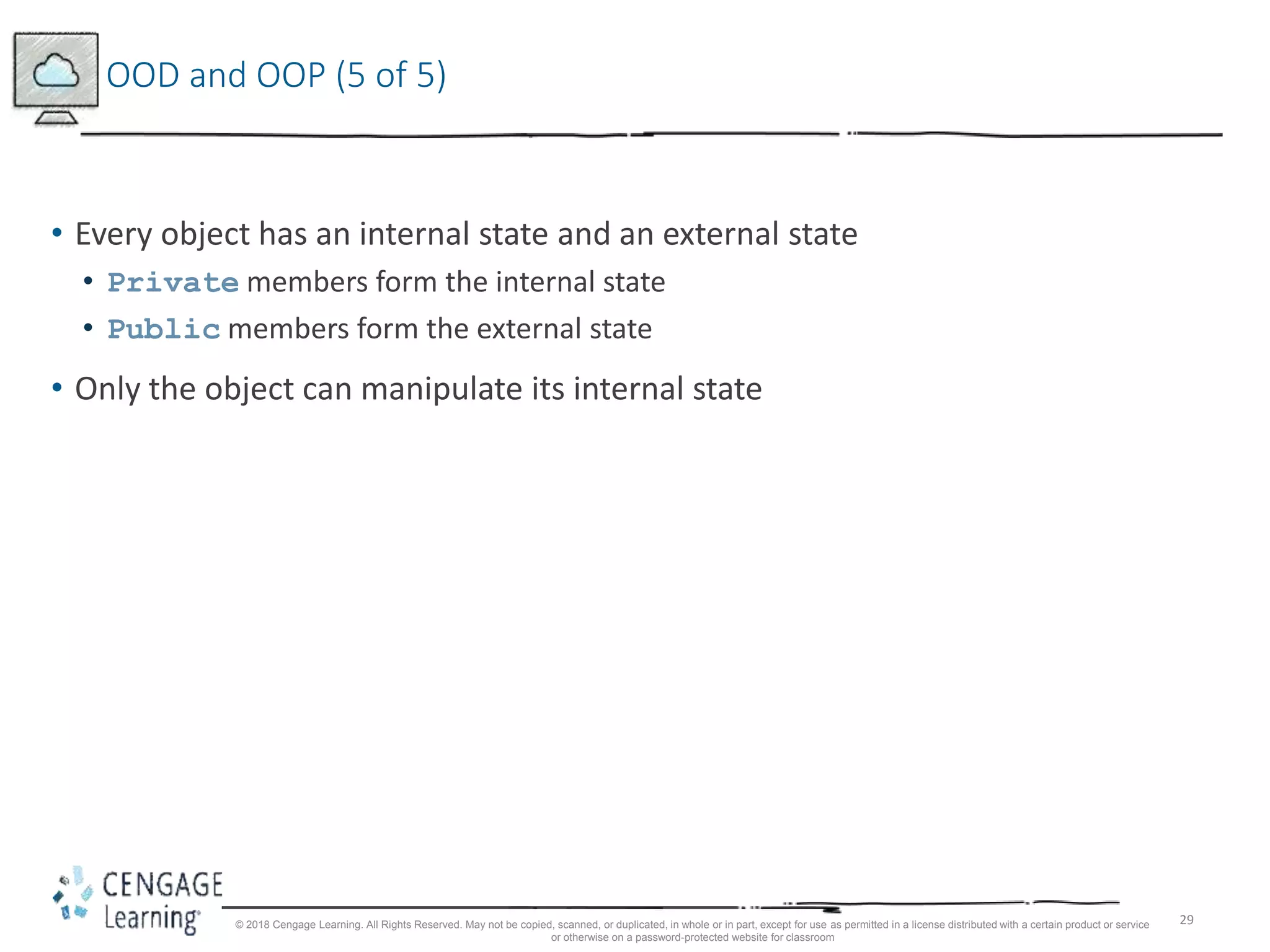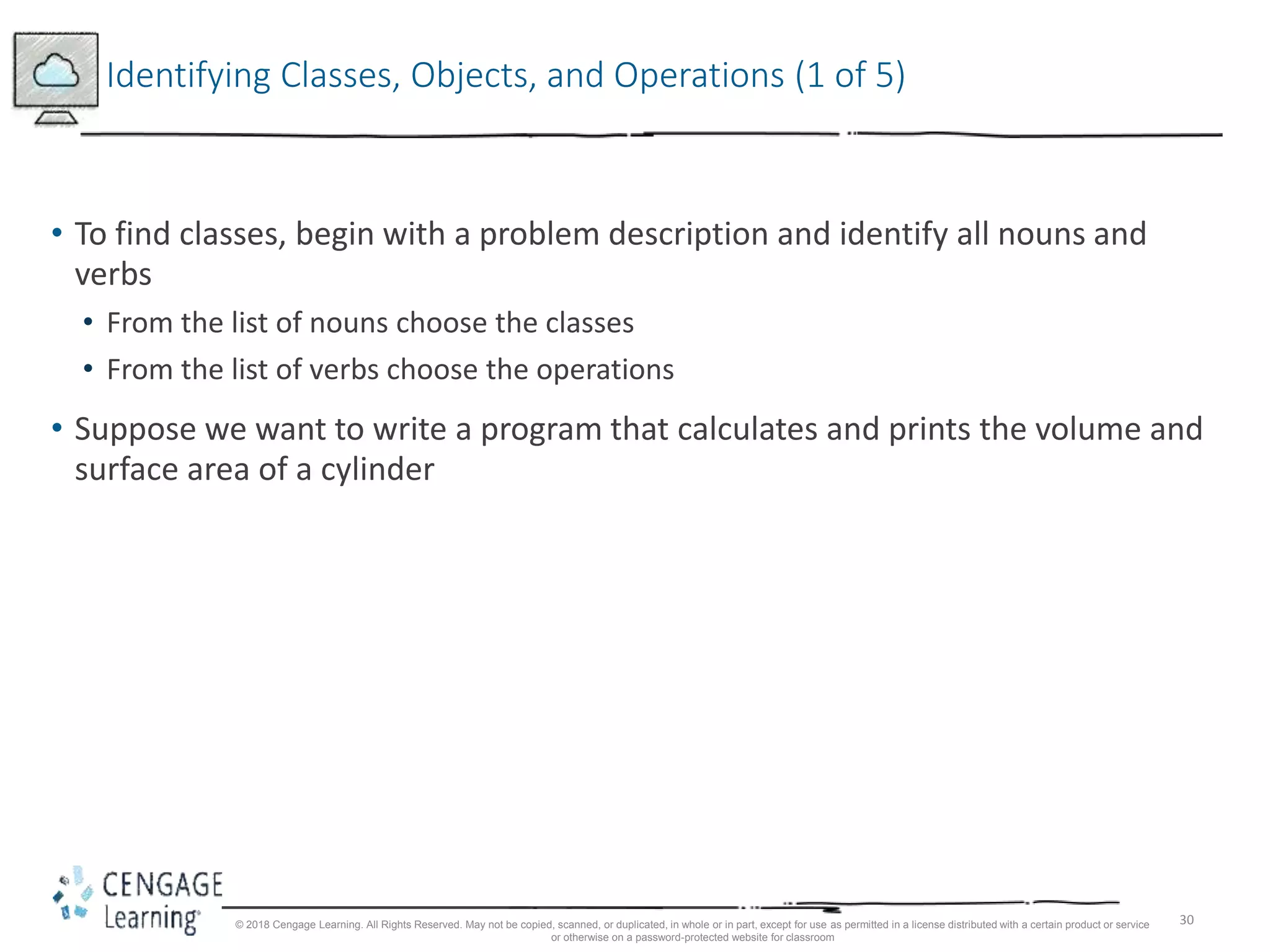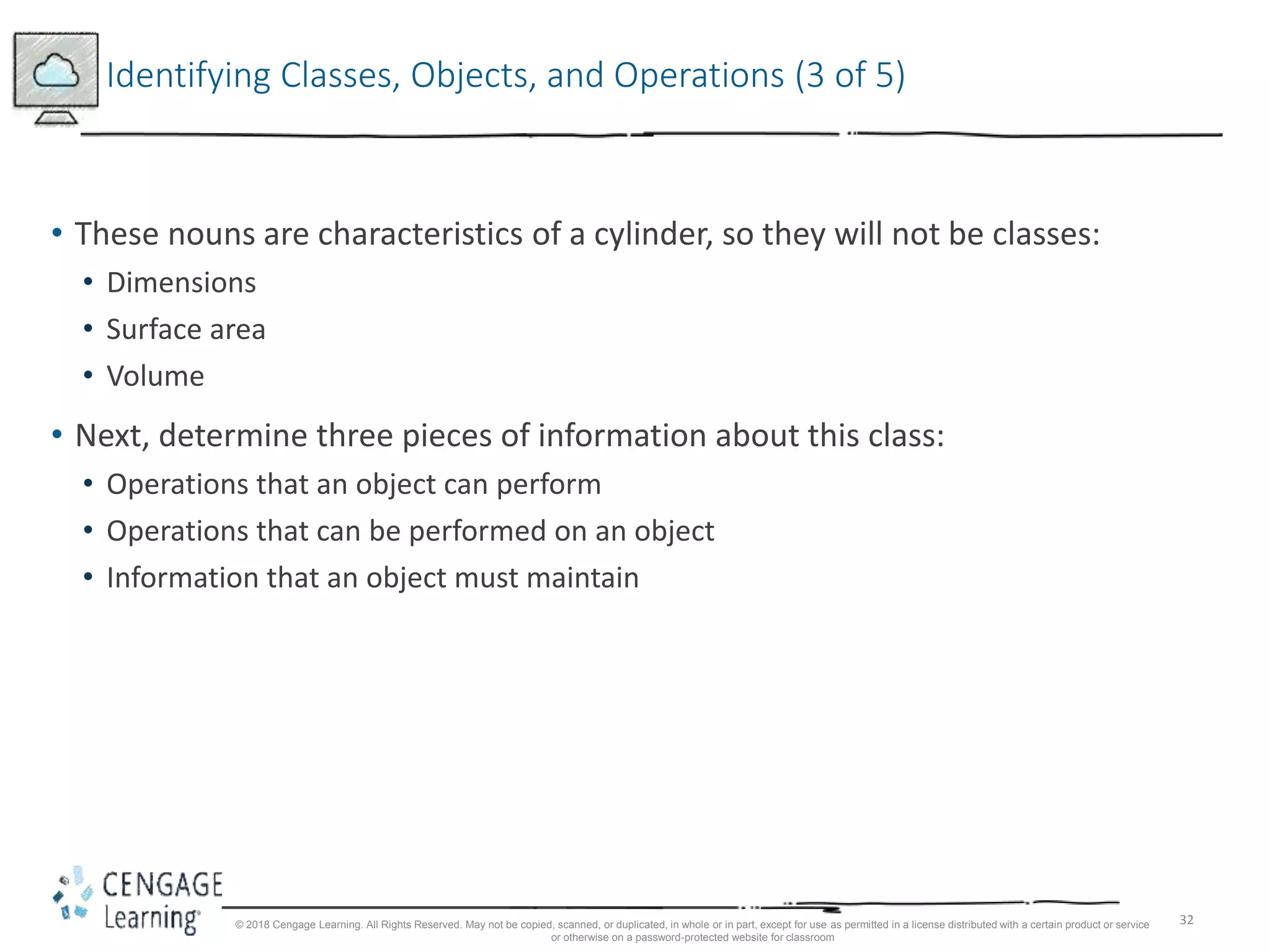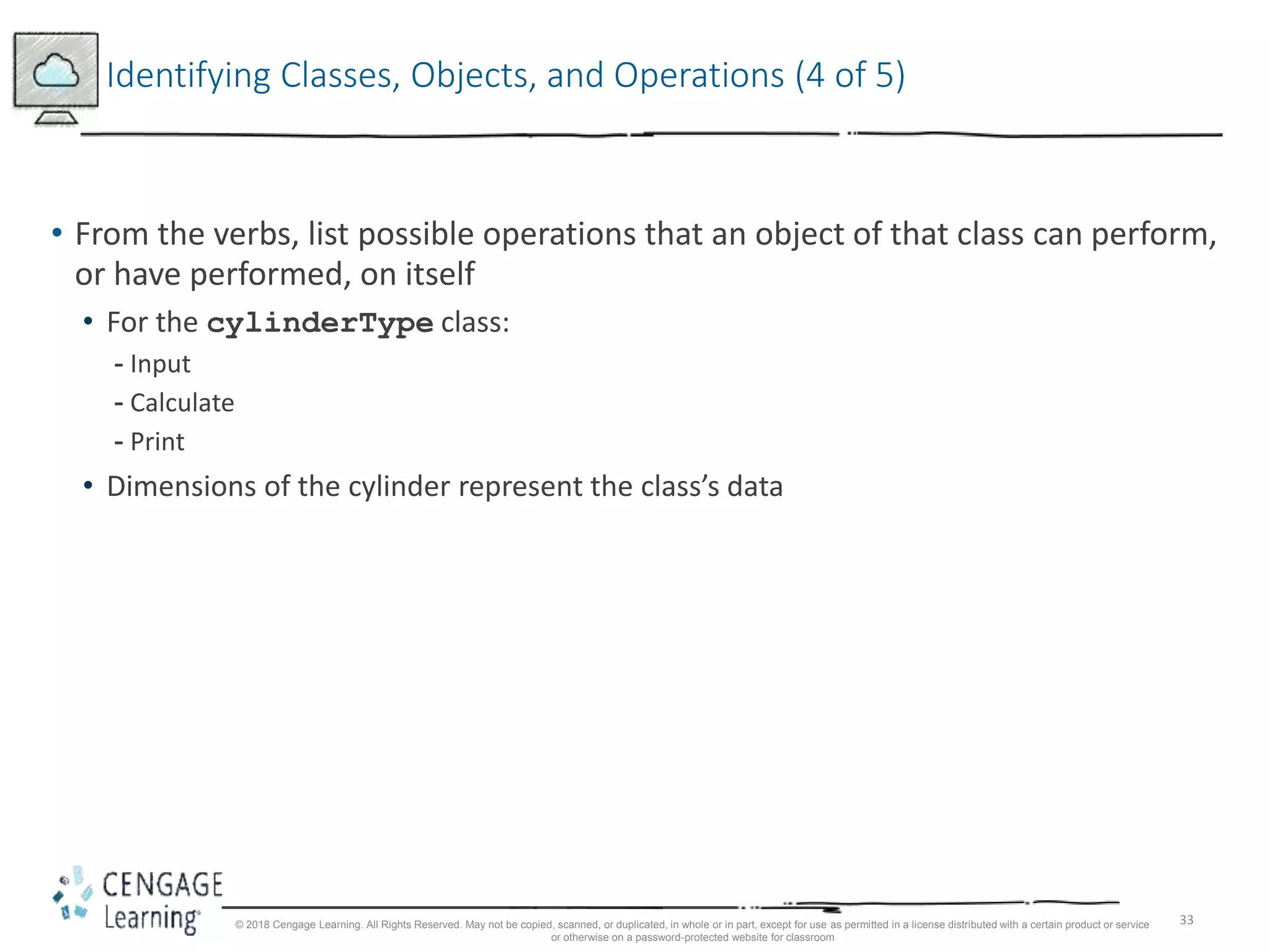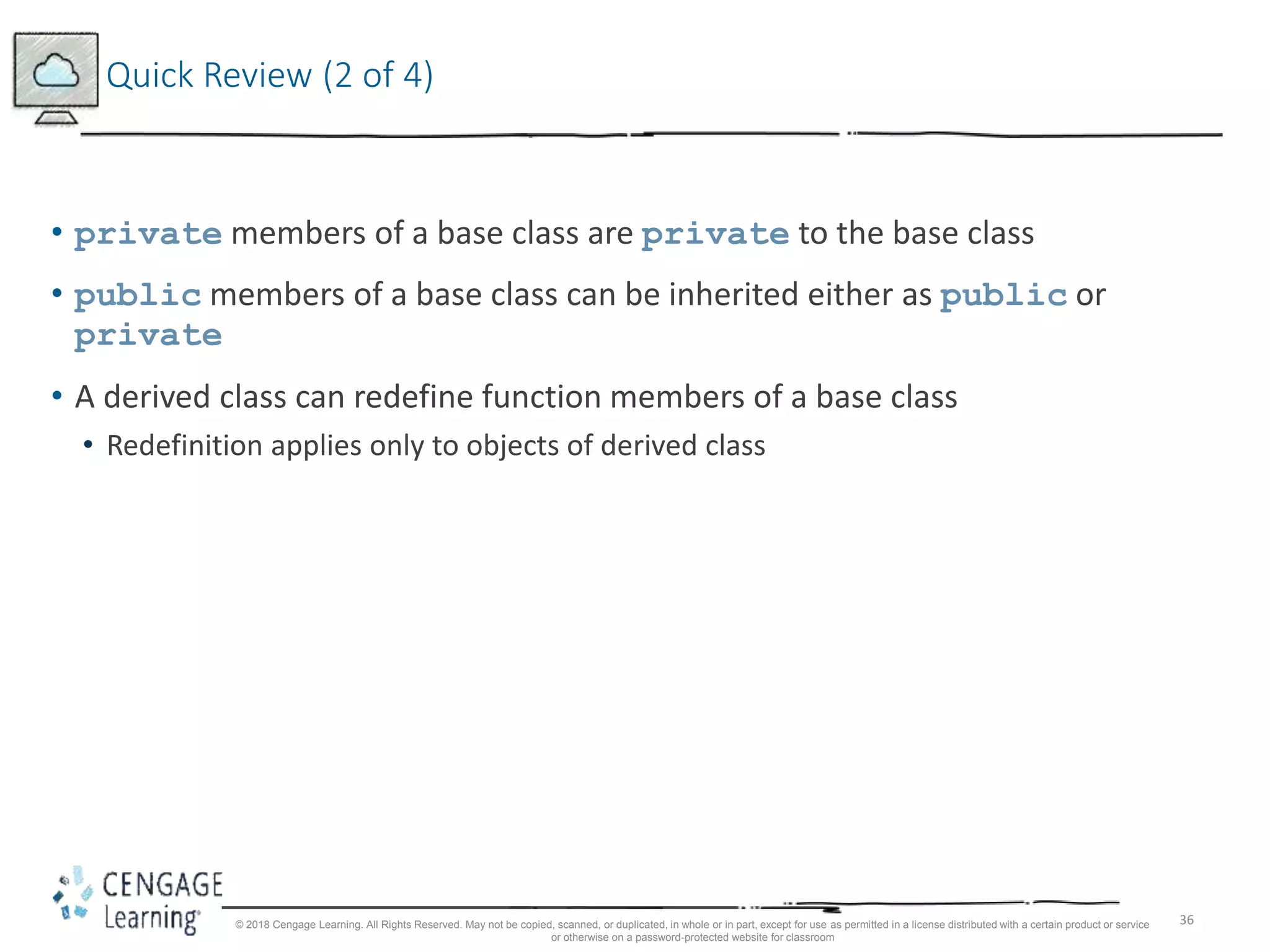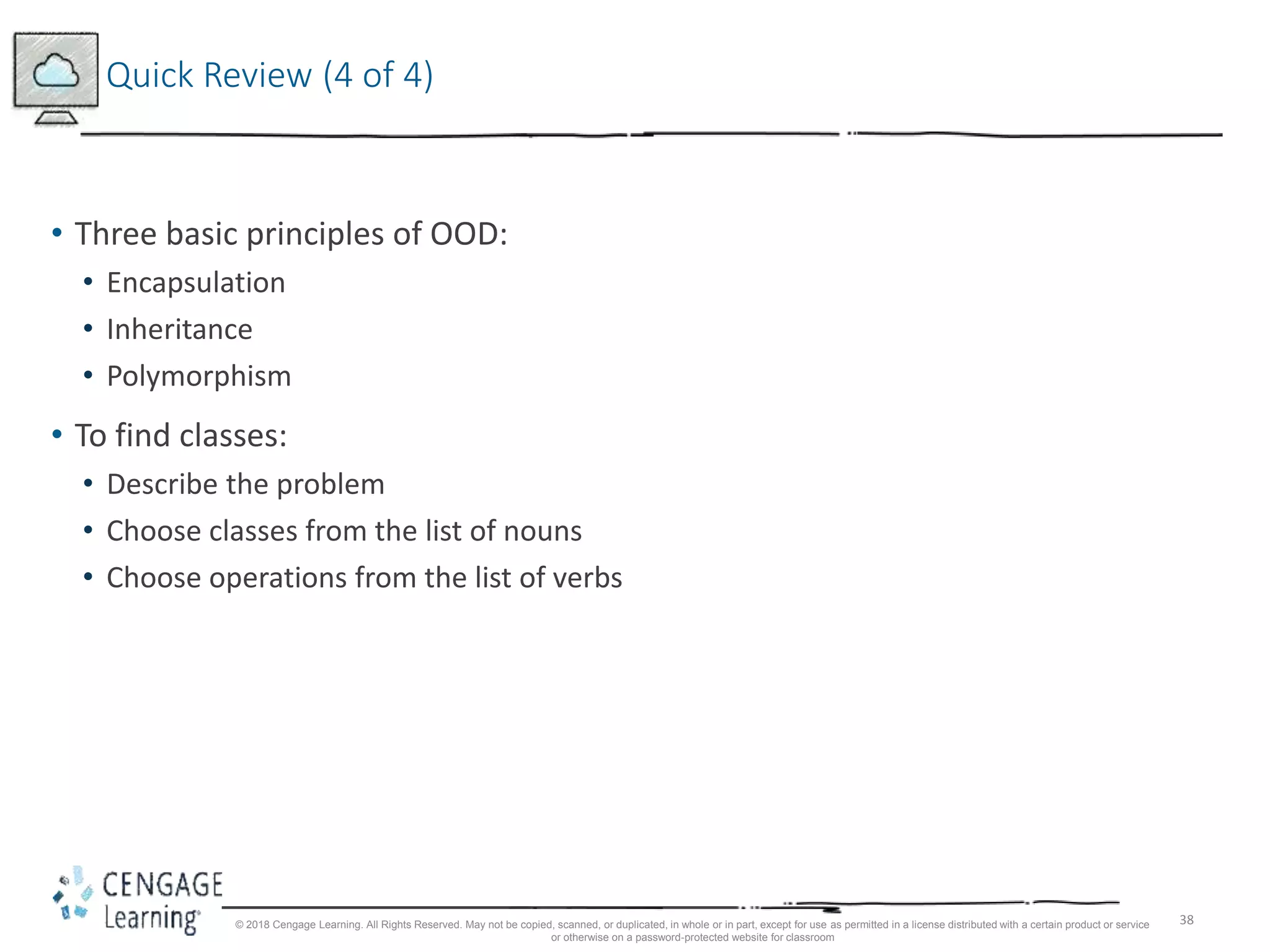This document provides an overview of inheritance and composition in C++. It discusses key concepts such as derived classes inheriting properties from base classes, redefining member functions of base classes in derived classes, how constructors and destructors work in inheritance hierarchies, and the differences between inheritance, aggregation, and composition relationships between classes. The document also covers stream class hierarchies and the three main types of inheritance: public, protected, and private.




